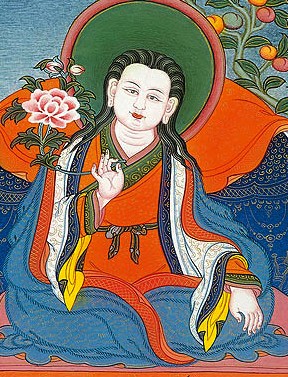The flower was raised.
Never has there been anything given to another.
Never has there been anything received from anyone.
Knowing this treasure of the eye of reality, He Smiled in Silence.
Know more about his smile .
You can Contact us at our new Email
Post Remembrance of a old winter, five years past. Read an old post here about beauty in winter
Series: :The Awakening of Silence
The flower was raised.
Never has there been anything given to another.
Never has there been anything received from anyone.
Knowing this treasure of the eye of reality, He Smiled in Silence.
Know more about his smile .

The note from a flute exists,
because the flute is hollow,
because its holes are empty,
because the wind is silent.
If the Flute isn't hollow,
If the holes aren't empty,
If the wind isn't silent,
The note from a flute cannot exist.
Even when the note ceases to exist,
The flute is still hollow,
Its holes are still empty,
and the wind is still silent.

If we are not careful, we could end up not practicing dhamma even without knowing that it is so. The various rituals, vast texts , prayers, objects are all a reminder of dhamma and do not themselves constitute as a practice of the dhamma. what is important is a never-ceasing alertness to recognize these are all reminders of the essence of the jewel, and not the precious jewel itself.
Here is a story of Dromtönpa, who was the chief Tibetan disciple of the great Indian master Atisha.

One day an old man was reading texts very intently in Reting monastery, and as Dromtönpa walks by he pauses and asks the old man what he is doing, the old man replies that he is studying the great texts. Dromtönpa replies:
“It is nice that you are studying the texts, But isnt it better to practice Dhamma”.
On hearing this the man thinks the master is probably asking him to practice meditation rather than merely reading the texts. A few weeks later as Dromtönpa walks by he sees the Old man intensely meditating – and Dromtönpa asks him what he was doing, the old man replies that he was meditating and had reached a deep level of meditative state by his practice. Dromtönpa replies:
“It is nice that you are meditating, But isnt it better to practice Dhamma”.
On hearing this the old man thinks the master is probably asking him to show reverence to the Buddha, in addition to merely studying and doing meditation. A few more weeks later as Dromtönpa walks by he sees the old man profusely circumambulating the stupa near the monastery. Dromtönpa asks him what he was doing, the old man replies that he was paying homage to the Buddha by circumambulating the stupa. Dromtönpa replies:
“It is nice that you are circumabulating, but isnt it better to practice Dhamma”
On hearing the old man becomes confused and asks Dromtönpa how to practice Dhamma? Dromtönpa replies:
“Give up attachment to the affairs of this life,
renounce them.
Your mind itself should become the practice
and for it to happen
you must cease being distracted by worldly concerns.
Otherwise, no matter what you do,
it will not be the practice of Dhamma.”
By not being completely distracted by worldly pursuits, even suffering/dissatisfaction stops being an obstacle for liberation, instead becomes a source and instrument for enlightenment.
Cherok Lama, was giving us a Q&A session in Bangalore a few days ago- and he was asked by someone if he thought that enlightenment was possible for a man with worldly responsibilities and distractions from being married and leading a lay life. Cherok lama gave a resounding reply that there is a 100% possibility! that such a man can become enlightened. It all depends on his state of mind, and to what extent he has trained it. Any duty becomes worldly purely on how we approach it. If we approach it with the right mind and motivation every action can become a source of attaining enlightenment.
References:
The Photo and more information about Dromtönpa was taken from the Rigpa wiki.
I heard the story of Dromtönpa, from Lama Zopa Rinpoche during a Week long teaching session at Bangalore in March 2014. The story as it appear here was adapted and modified from:
a. Transcript of Kopan Course No.09 (1976) by Lama Zopa Rinpoche, and
b. Images of Enlightenment: Tibetan Art in Practice by Landaw/Weber. Snow Lion Publications, 2006.
